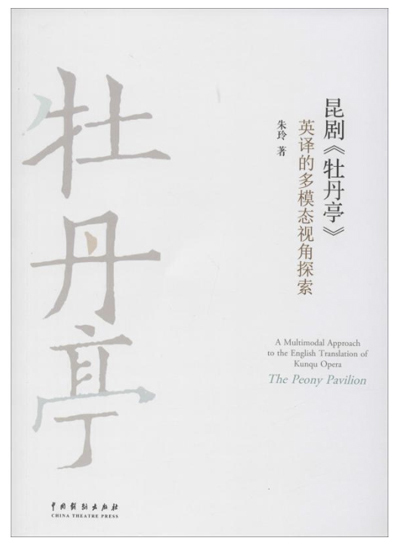Theoretical explorations of Kunqu Opera translation

A Multimodal Approach to the English Translation of Kunqu Opera—The Peony Pavilion
A Multimodal Approach to the English Translation of Kunqu Opera—The Peony Pavilion, is a monograph on the translation of Kunqu Opera from the perspective of multimodal discourse analysis. Written by Zhu Ling, a scholar from the Center for Cross-Cultural Research at Soochow University, the book probes Kunqu Opera's inherent features of language, literature, musical and singing techniques, and stage performance. It adopts interdisciplinary research methods, absorbing the multimodal discourse analysis theory in linguistics, case studies in translatology, and art analysis in the fields of music, dance, performances, and fine arts. The author attempts to build visual and auditory grammar frameworks for Kunqu Opera's discourse analysis, and creatively put forward the multimodal Kunqu Opera translation framework.
Kunqu Opera is a comprehensive art form that integrates language, music, and dance, containing literary, ideological, and artistic natures. It appeals to synaesthesia, interacting with the audience through various sensory channels to generate dramatic effects. The Kunqu Opera translation is different from literary text translation which is only used for "reading," or translating stage plays' captions only for "watching."
The author makes a clear distinction among the confusing concepts of Kunqiang (Kunshan Tune), Kunqu (Songs of Kun), and Kunju (Kunqu Opera), while pointing out that the English translation of Kunqu Opera should cover all of the three. Due to its readable, audible, and playable natures, the charm of Kunqu Opera should be appreciated by integrating texts, dance, and sound. Given that the meaning of Kunqu Opera comes from the combination of multiple symbols, multimodality is its natural attribute.
Originating from natural sciences, the theory of multimodal discourse analysis is rooted in systemic functional linguistics, which refers to the combination of meanings from different semiotic systems. It emerged in the 1990s Western linguistic circle. After keenly capturing the multimodal nature of Kunqu Opera, the author applies the theory of multimodal discourse analysis to analyzing the source language texts and translations of Kunqu Opera, thus finding a new approach to the difficulties inherent in Kunqu Opera translation.
The author draws upon the visual and auditory grammatical frameworks proposed by Gunther Kress and Theo Van Leeuwen. Based on the analysis of multi-format texts such as pictures, music, and sculptures, the two frameworks have a strong explanatory power for multimodal texts. Introducing the multimodal discourse analysis theory helps resolve dichotomies in Kunju Opera's translation—the scripts of closet drama and on-stage drama, expression and reproduction, and rhyme style and prose style. In addition, it paves the way for new criticism standards of drama translation that are different from those of literary text translation.
Lyu Hui and Chen Daliang are from the School of Foreign Languages at Soochow University.
Edited by YANG LANLAN
